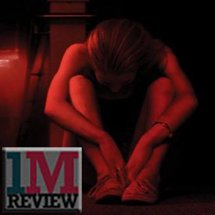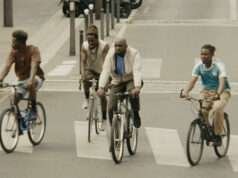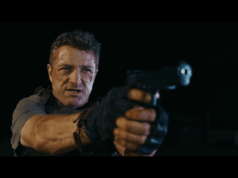Not groundbreaking but still lots of fun
In October of 1993, the students of Beatrice High School in Beatrice, Nebraska put on a play called The Gallows. A last-minute casting switch had an understudy playing the lead role, whose character was hanged before the townspeople at the conclusion of the play. Due to a horrific accident, shortly after the actor, named Charlie Grimille, slipped into the noose, a malfunction sent him through the floor beneath his feet, killing him almost instantly. Twenty years later, to honor the cast and the late Charlie Grimille, the students of Beatrice High School decide to resurrect the show, with a student named Pfeifer (Pfeifer Brown) directing the play.
Former football star turned thespian Reese (Reese Mishler) has decided to take on the lead role this time around, much to the dismay of his father, who wanted him to continue football, and his pal Ryan (Ryan Shoos), who hangs around the set during rehearsals just to ridicule and belittle the castmates. Reese desperately wants to get close to Pfeifer, though his own stage fright and lack of acting abilities prevent him from being much more than just another body on stage in her eyes. In an attempt to win her affection by being there, Ryan hatches a misguided plan of breaking into the school one night through an unlocked door and destroying the set of the play before opening night, presumably resulting in an opportunity for Reese to console Pfeifer. Reese, Ryan, and Ryan’s girlfriend Cassidy (Cassidy Gifford) go along with their asinine plan, breaking into the school late at night, but once they wind up meeting Pfeifer at the school, they encounter a barrage of paranormal activity and strange occurrences from what is believed to be Charlie’s undead ghost.
Such is the premise for The Gallows, the umpteenth rendition of the found footage genre, which I claimed to be “uniformly dead” following the release of 2012’s The Devil Inside. With The Gallows, a film made on a shoestring budget and released by Blumhouse, a known indie horror company, no new ground is broken but the ground that the film manages to chart is interesting, twisty, and a great deal of fun.
- The Gallows
- Written & Directed by
Travis Cluff & Chris Lofing - Cast
Reese Mishler, Pfeifer Brown, Ryan Shoos - Release Date
10 July 2015 - Steve’s Score: 9/10
*****
I’ve always found high school/college drama rooms and theaters to be creepy places where one can find just about any old prop or relic. Seeing these locations captured with lowlit, dingy lighting only emphasizes their almost inherent eeriness. With The Gallows, we don’t settle for creaky floorboards and shifty objects, but rather, detailed props and set designs of colonial periods that really intensify a feeling of discomfort. Being that there are only four characters, confined to the spacious setting of a theater-focused high school, there is a lot of room for which to roam and play around, which adds to the fun of the film.
The writing/directing team of Travis Cluff and Chris Lofing also have fun toying with the visual possibilities of their setting. Consider the scene where they evoke an effect that almost communicates an optical illusion to the audience, showing a long, narrow hallway in the bowels of the school, captured in almost complete darkness, with the bottom half of the walls painted dark red. The visual effect makes it look like we, along with the characters, are wading through a thick, black sea of sorts, or are encapsulated into nothingness. These visual tricks, whether conscious decisions on part of the filmmaking team or fortunate occurrences, make for a film that is never visually boring, constantly finding ways to invigorate its setting.
The videography and editing, while shaky, also works to help the film create this spooky atmosphere. The nauseating effects of found-footage films are well known, and this year saw some of the shakiest videography the genre had yet to see in Project Almanac, which still wound up succeeding in my mind on a plethora of different levels despite its guerrilla filmmaking. The shakiness of “The Gallows” is never a real issue, for it continues to add to the suspense and Edd Lukas’s cinematography, which is very fixated on the lowlit and the ominous.
Furthermore, we get three of four smug characters that, while unlikable, find ways to be funny. Ryan’s character is obnoxious from his first appearance and Reese’s easily swayed personality isn’t much better; however, these characters soon get their comeuppance as time goes on, and Cluff and Lofing are careful never to play the characters’ banter for more than it is – cheeky fun.
The Gallows could’ve also fallen prey to the faults of As Above, So Below, last summer’s low-budget horror effort, which failed largely in part because of its interchangeability in its execution. The Gallows, however, keeps things moving not only with a great setting but narrative twists and a persistency to show what other found footage films won’t always show. We have multiple different camera perspectives, and once we see a character is doomed from one angle, we will eventually see the event unfold from his or her perspective and not just the one that closes us off from the events. So many found footage films leave us in the dark when it comes to the fate of the film’s characters, figuratively and literally, but Cluff and Lofing seem to be sick of being left in the dark and, in turn, give us multiple different perspectives to show us what we wanted to see in the first place.
If you’re no fan of the found footage genre, The Gallows certainly won’t make you one. It lacks the power of being the subversive piece of horror that the genre really needs now (look to films like Patrick Brice’s Creep for that kind of quality). However, this is a film that does the very bare basics of the genre correctly, and with a budget of approximately $100,000, The Gallows finds itself stripped to the genre’s minimum, forced to focus on narrative and the creepiness of its setting. This is the perfect horror outing that makes audiences active in the mystery and the looming ominousness of the story, rather than passive observers simply anticipating the next jump scare.







